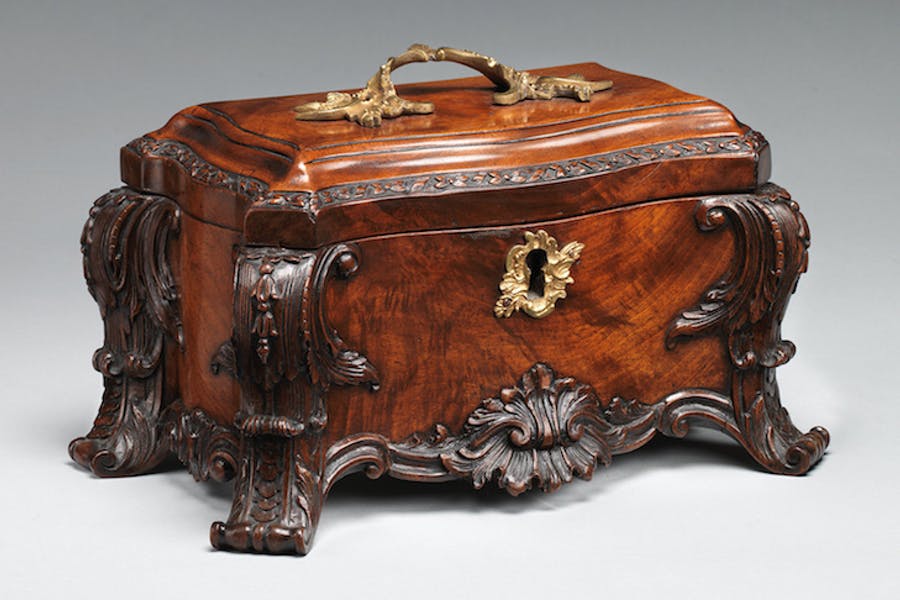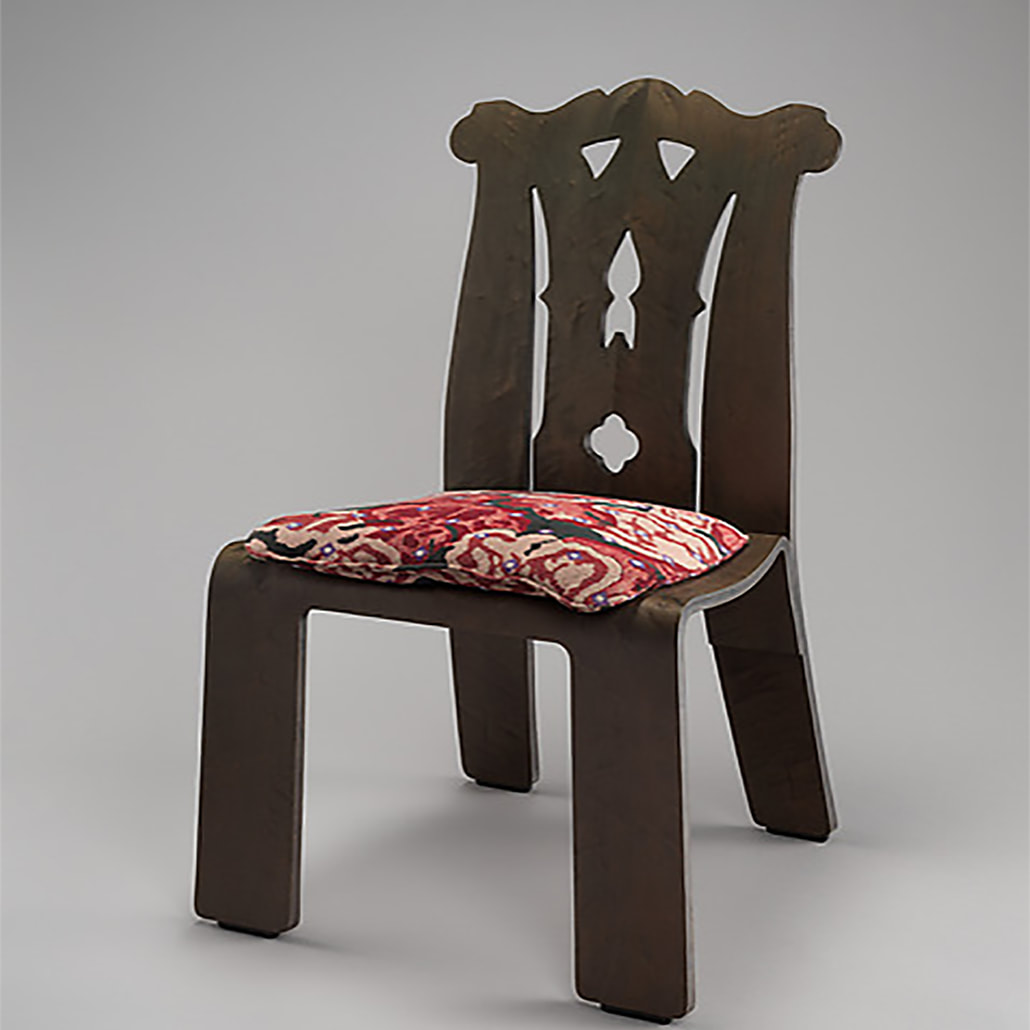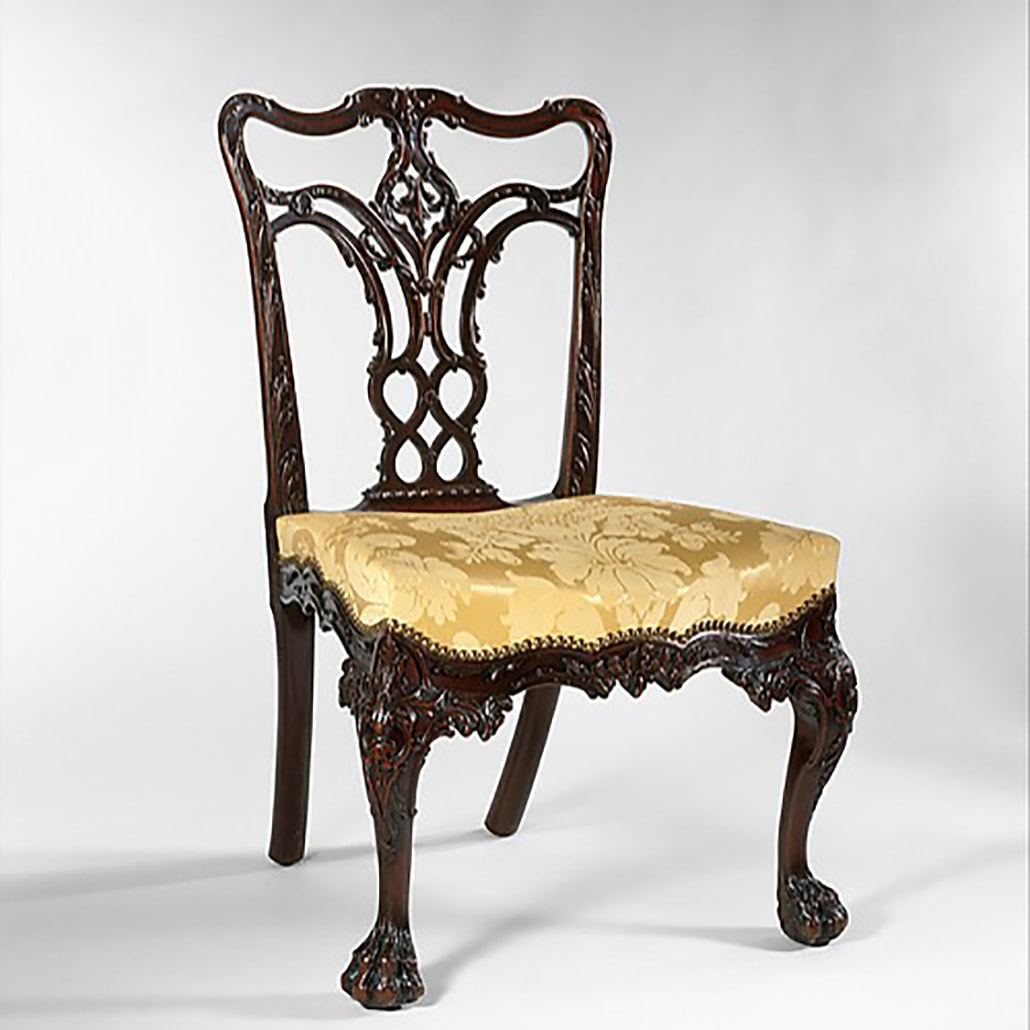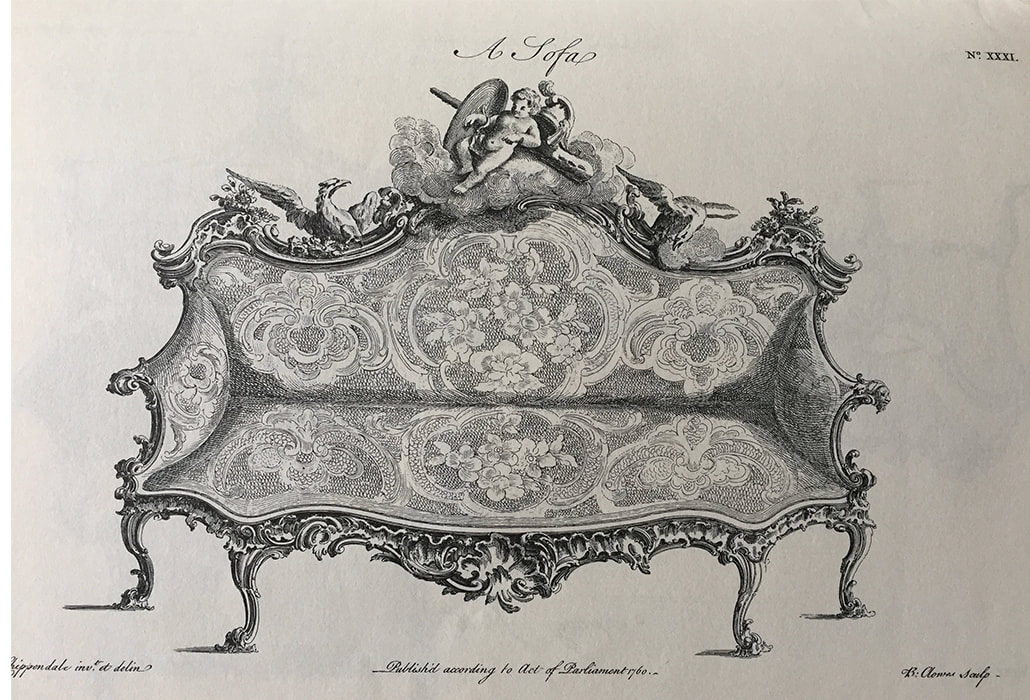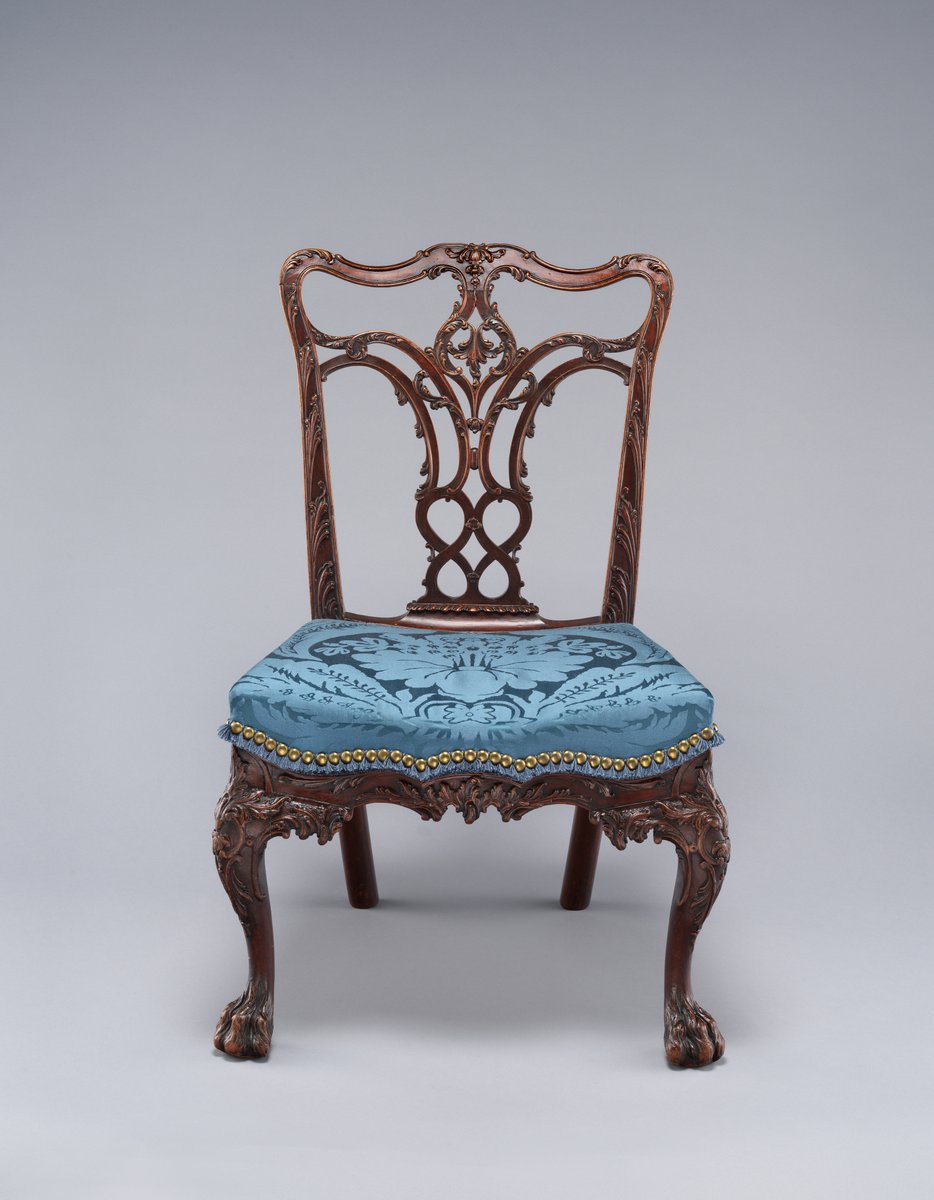When I started my journey in the world of design, attending an MA program in the early 90s, American Chippendale furniture was the ultimate blue chip, the most desirable furniture among collectors. Some preferred the ornate pieces created in Philadelphia, and others the bold furniture with claw and ball feet and magnificent carved shells crafted in Newport. Everyone could find what fitted their taste among the furnishings created by émigré cabinetmakers who were inspired by the blockbuster publication of that time, The Gentleman and Cabinet-Maker’s Director, which London-based furniture maker Thomas Chippendale first published in 1754. Chippendale was the Jean Prouve of that time. But taste has shifted tremendously, and the young generation of collectors don’t know Chippendale; yet, it has remained the household name in the furniture industry. In celebrating his 300th birthday, the Met has opened an exhibition “Chippendale’s ‘Director’: The Designs and Legacy of a Furniture Maker,” focusing on the American vogue named after the famed cabinetmaker. It is remarkable to learn that Chippendale did not invent any style, as his book, and production rather consisted of designs in those styles in fashion in London at his time. Chippendale was not even the most successful cabinetmaker working in London, we learn from the excellent essay published by Met’s legendary expert Morrison H Heckscher in the occasion of the exhibition. But, he was a brilliant businessman, who created a brand before branding was the name of the game in the world of design, because he knew how to curate and how to use the media to elevate his name. The exhibition examines Chippendale’s legacy through display of objects, drawings, and books from the collection of the Met, reminding us of this magnificent chapter in design history, which at times, seems to be forgotten. Loved seeing the example which Robert Venturi created for Knoll in the 80s (above) and wanted to see more of 20th-century and contemporary designs which keeps the legacy of Chippendale alive. Thank you, the exhibition’s curator Alyce Englund for showing me around and for illuminating the principles behind this important and enjoyable show.

